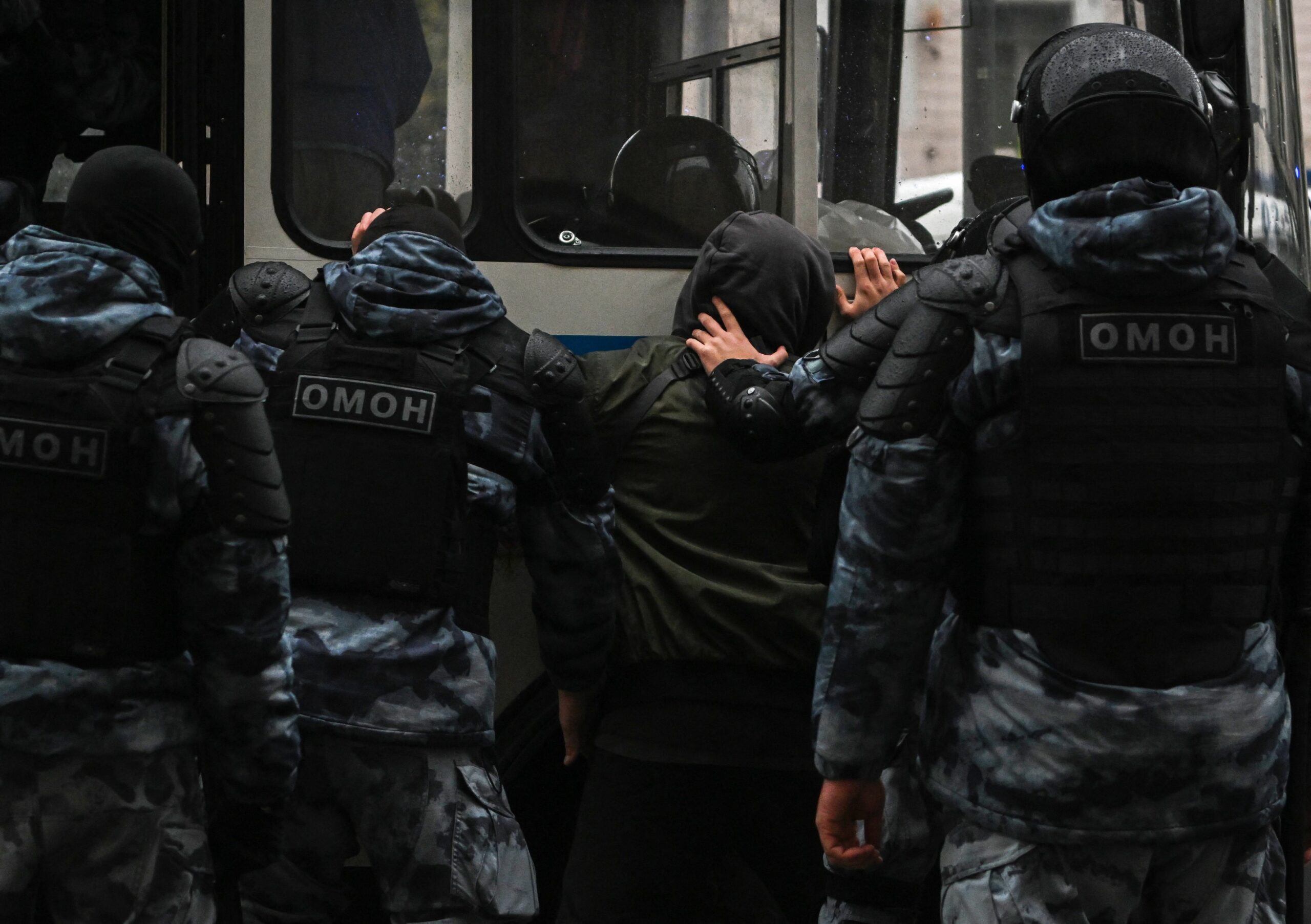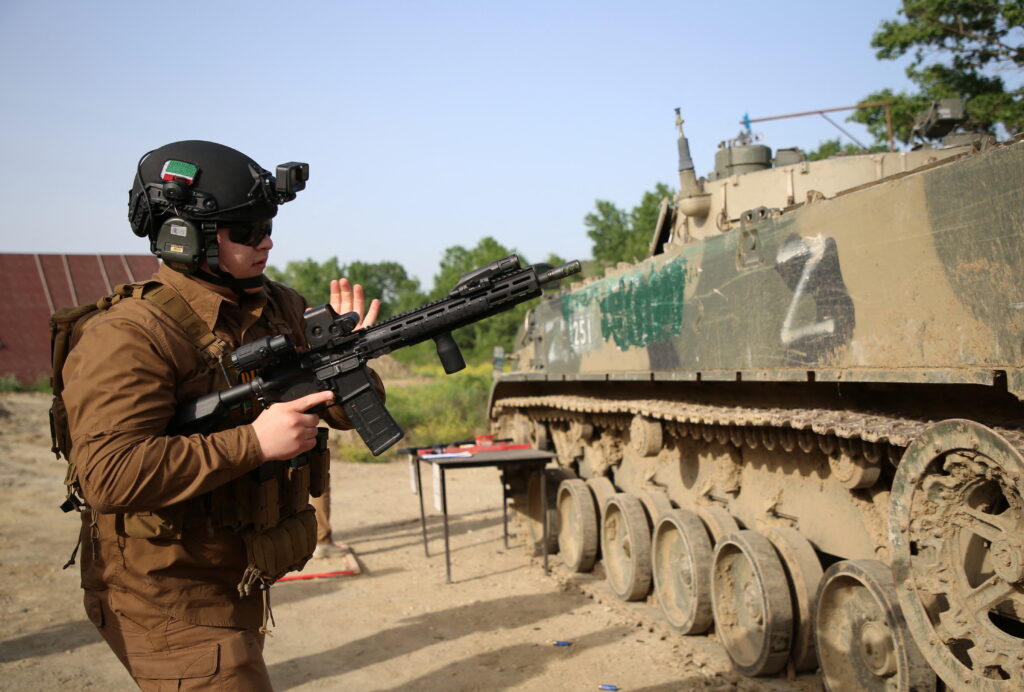The authorities in the Republic of Kabardino-Balkaria—one of two regions in the North Caucasus shared by the Circassians and Karachay-Balkar—have embarked on an escalating campaign of repression over the past several months. It started in reaction to anti-mobilization protests and anti-war partisan attacks. The escalating crackdown, however, has strayed far from the sources of resistance. In fact, the authorities have targeted civil society organizations and academic research institutes which are unrelated to resistance in the republic, but which channel the national interests of the Balkar and Circassian peoples. (Despite this, the authorities did not crack down on the commemoration of the Circassian Genocide on May 21, despite banning all related events.) As this essay will highlight, these crackdowns have a significant historical basis and will have major implications throughout the republic and the region.
Historical contention
Points of conflict between the authorities and the republic’s residents are rooted in the respective deportations of the Circassian and Balkar peoples. Circassians who survived the massacres of Imperial Russia’s conquering of the Caucasus were ethnically cleansed and deported to the Ottoman Empire in what is known as the Circassian Genocide. The Balkars were one of several peoples deported by Stalin in the early 1940s. The Kremlin has sought to prevent any Circassian unity: they are divided across three ethnic republics,; different sub-ethnic labels are utilized during censuses; diaspora members are not allowed to repatriate despite being legally permitted, and the authorities reportedly instigate civil society fractures. The authorities have embarked on a similar strategy toward the Balkars. Additionally, Moscow has instructed regional and local authorities to suppress annual commemorations of the genocides, for Balkars on March 8 and on May 21 for Circassians.
While neither Balkars nor Circassians historically mobilized against the authorities in the same manner as the Chechens, Ingush, or Dagestanis, there have been several instances of peaceful and violent resistance in the post-Soviet era. In November 1996, a group of Balkar nationalists attempted to establish a «Republic of Balkaria» within the Russian Federation, seeking to secede from the Circassians. The basis was the authorities’ neglect of the sociopolitical problems of the Balkar people and the failure to enforce the «Law on the Rehabilitation of Repressed Peoples.» As part of the Yarmuk Jamaat—a local jihadi-separatist unit that eventually joined Imarat Kavkaz’s United Vilayat of Kabarda, Balkaria, and Karachay (Vilayat KBK) in 2007—some residents of Kabardino-Balkaria participated in the insurgency in the 2000s. Prior to 2010, casualty statistics for the conflict are difficult to find, as the local insurgency was still emergent; the Yarmuk Jamaat was only formed in 2002, with its only major attack being the failed assault on Nalchik in October 2005. From 2010 onwards, however, the insurgency in Kabardino-Balkaria accelerated. Statistics compiled by Kavkazskii Uzel record that 775 people fell victim to the republic’s armed conflict between 2010 and 2022. The insurgency in Kabardino-Balkaria ended with a sharp drop-off in casualties around the time of the Sochi Olympics in 2014. This decline was due to both the security services’ attempts to subdue militancy movement ahead of the Sochi Games and fighters leaving in response to ISIS’ growth in Syria in 2013. However, ahead of the 2014 Sochi Olympics and up to its opening day, Circassians protested the hosting of the events on the sites of the Circassian Genocide, which had occurred 150 years prior. In the years following the games in Sochi, several cultural events were treated as threats by local authorities and repressed. In October 2020, for the first time, reports surfaced of sharia patrols enforcing Islamic law in a Circassian community in the east of Kabardino-Balkaria. All such acts of resistance have been suppressed.
Kabardino-Balkaria resists
Last September’s mobilization was met with substantial resistance and vocal public outcry across the North Caucasus, especially in Kabardino-Balkaria. Residents protested across three days in the regional capital of Nalchik, as well as in the city of Baksan and the town of Nartkala. A few dozen men who had been summoned refused the order to mobilize, mirroring the actions of 115 Rosgvardia troops from Nalchik who refused to deploy to the front in May 2022. The September 25 protest in Nalchik was organized by Ibragim Yaganov, a long-time Circassian activist, currently in exile to escape politically motivated terrorism charges against him. Yaganov has been more than a vocal opponent of the war in Ukraine. He not only encouraged Circassians to refuse to fight for Russia, stating that «this is not our war,» but also called on them to enlist in Ukraine’s fight against Russia. So far, however, the only Circassian publicly known to be fighting alongside Ukraine is Mu’az Kabardinets.
In contrast to these displays of civil disobedience, and Mu’az’s solo fight, the mobilization order motivated some men to engage in partisan actions within the republic. Only a week after the anti-mobilization protests, officers from the Ministry of Interior Affairs and Rosgvardia killed two militants who were reportedly carrying explosives to destroy a railway bridge near Prokhladny. At the end of December, the authorities killed another two partisans who were allegedly planning to attack an enlistment office in Chegem, a town near the capital of Nalchik. These two incidents were the first partisan actions in the North Caucasus, with their location in Kabardino-Balkaria coming as quite a surprise. There is no clear explanation for why the planned attacks were in this republic—the best indicator could be the unexpectedly large anti-mobilization protests and the Rosgvardia troops’ refused deployment. These two acts reveal the previously hidden extent of anti-war sentiments in the republic. From a more logistical standpoint—i.e., availability of arms—there is no clear reason that resistance escalated into violence in Kabardino-Balkaria rather than, say, Dagestan or Ingushetia.
Both the protests and partisan actions were detached from any institutionalized organizational channels: the protests were organized via social media and personal networks, while the partisans appear to have been lone wolves. In other words, the dimension of nationality has not directly been a factor in the most recent spate of incidents. The surprising resistance in Kabardino-Balkaria ultimately stimulated a harsh response by the authorities, who retain historical biases against expressions of national identity and have a long list of usual suspects to go after.
Authorities crack down
Civil society actors have borne the brunt of the latest repressive campaign. In mid-March, the Nalchik City Court dissolved two civil society organizations for the Balkar segment of the republic’s population: the Council of Elders of the Balkar People (Sovet stareishin balkarskogo naroda) and Bash-Tere. The court’s decision to disband the Council of Elders was quickly condemned as illegal by activists. This move was an attempt to silence the public voice for Balkars—across the North Caucasus, similar organizations of elders hold an esteemed position in state-society relations, typically acting as a liaison for airing grievances in a non-confrontational manner. As evidenced in Ingushetia, silencing a mouthpiece for the public does not silence society.
Another example of the harsh reactions of the authorities is the designation of Ibragim Yaganov as a «foreign agent.» The Russian Ministry of Justice’s official reason is that the Circassian activists allegedly received foreign support while calling for violations of the law, resisting authorities, and protests threatening the territorial integrity of the country. This move, while overly heavy-handed, is not surprising in light of his activities. Additionally, at the time of the anti-mobilization protests, pro-regime Telegram channels claimed that Yaganov was the United States’ agent, conducting some unnamed, sinister mission—leaving the specifics up to insinuation—on behalf of his American patrons in Russia’s Kabardino-Balkaria. In addition to appealing to Circassians, Yaganov addressed the Balkar residents of the republic, calling for the unification of peoples against Russian colonialism. Yaganov has long voiced solidarity with other peoples of the North Caucasus during their times of struggle. However, it is questionable how far he able to sway Circassian society to support his positions and to join the interethnic independence coalition—currently including representatives from Chechnya, Ingushetia, and Dagestan. This is because of his controversial status and the diversity and fragmentation of the Circassian diaspora. Regardless of his or any other civil society actor’s limited capability, or willingness, to organize resistance, the authorities in Nalchik and Moscow consider them a threat.
Gradually, the authorities have expanded their crackdown to target academics at state research institutions alongside everyday people, in other words, those who could be considered general cultural representatives of the Balkars and Circassians. The first instance of this expansion occurred in November 2022, when the authorities raided the homes of three researchers at the Institute of Humanitarian Studies at the Kabardino-Balkarian Scientific Center of the Russian Academy of Sciences. Those researchers were interrogated purportedly about their previous collaboration with the Circassian Cultural Center, an institution located in Tbilisi, Georgia, the only country to recognize the historical Circassian Genocide. At the end of January this year, the authorities again targeted researchers at IHS KBSC RAS. This time during the raids, the anonymous researchers were accused of «anti-Russian activities.» These crackdowns on state-sponsored researchers suggested the authorities were generally targeting any channel for reproducing or preserving the Circassian identity.
In a similar vein, stories have emerged of incidents where the republic’s Circassians have been confronted by police if they have publicly displayed the Circassian flag, rather than that of Kabardino-Balkaria. As the Circassian flag is also the flag of the Republic of Adygea, this action is absurd. These events also indicate how the authorities appear to be growing more fearful of a united Circassian identity. Ahead of the recent census, activists campaigned for all Circassians to declare their ethnicity under the «cherkes» label in an effort to overcome the state’s promotion of sub-ethnic identity labels (kabardin, adyg, cherkes, shapsug, etc.). Such efforts by activists are largely for the goal of cultural and linguistic preservation, hardly anything nefarious.
Repression’s endgame
The repercussions of the authorities’ new wave of repression in Kabardino-Balkaria reverberate beyond the republic. The new campaign affects the other Circassian regions, as well as the rest of the North Caucasus. The strategy of repression in Kabardino-Balkaria is likely to widen.
In Kabardino-Balkaria and the other Circassian republics, the Genocide Memorial Day (May 21) seemingly remains a red line for the authorities’ repression. Despite preemptively banning commemorations for two consecutive years, events have proceeded without a crackdown by the security services. It is surprising that the Circassian Genocide Memorial Day seemingly remains immune from repression, considering the latest wave of repression indicates growing hostility toward any expression of national identity and an inclination to criminalize such expressions under the guise of «anti-Russian activities.» Smaller memorial events than the large, annual procession have previously led to criminal charges. The aforementioned crackdowns on non-Adygean uses of the Circassian flag — i.e., by Circassians not from the Republic of Adygea — have not been repeated on May 21. The most logical explanation for the authorities’ contrasting responses to expressions of Circassian identity between everyday life and May 21 is that they consider the Circassian Genocide commemoration to be relatively worthwhile, it is a low stakes explanation of identity—so long as events avoid more heated political issues, such as repatriation. That these events are perceived this way can be attributed to how the Kremlin considers everyday displays of shared identity indicative of a latent identity movement existing outside what is preferred by the federal authorities. The fear is that these implicitly promote separatism, since the assertion of national identity outside federally permitted channels in the North Caucasus is considered a separatism risk. Meanwhile, May 21 is viewed as an exceptional event, a focal point for identity breaking with the pattern of ordinary life. Accordingly, Moscow trusts Nalchik’s decision not to risk exacerbating tensions with a crackdown on the Circassian Genocide commemoration this year, despite the overarching repression campaign. Allowing the memorial events to proceed by a bending of the rules could end if the risks of its shared identity promotion are perceived to expand beyond Circassians.
In the North Caucasus at-large, there are two evident impacts of the repressive campaign in Kabardino-Balkaria. First, the May 21 events have served as a sort of commonality for the peoples of the North Caucasus, regardless of their attitudes toward Moscow, with participants joining from across the region. Ossetians and Dagestanis attended the memorial procession in the republic’s capital Nalchik. Beyond the republic, Abazins, Abkhazians, Chechens, and others joined memorial events in other Russian republics and in diaspora countries. The anniversary’s symbolic potential to bring together the peoples of the North Caucasus is a rarity in a region still marred by fallout from Stalinist deportations and post-Soviet conflicts. Regional solidarity is a phenomenon more likely to be interpreted as a potential threat than a potential stabilizer by authorities in Moscow. Second, the strategy in Kabardino-Balkaria is the latest assertion of the policy escalating from co-optation to coercion to dissolution of organizations perceived to represent a threat to the authorities. Before Kabardino-Balkaria, it was utilized in Ingushetia. The populations of the other North Caucasus republics have avoided falling victim of this strategy by being deemed sufficiently repressed (Chechnya), divided (Dagestan), or compliant (North Ossetia). These perceptions of the republics are subject to change, as both Dagestan and North Ossetia, for example, have experienced mass protests in the past few years. In fact, the broad targeting of state-supported academics working on regional research topics has already been implemented outside Kabardino-Balkaria. Popular Dagestani historian Khadzhi Murad Donogo—former Deputy Director of the National Museum of Dagestan and expert on the late-Imperial and Soviet North Caucasus—was also subjected to police raids and confiscation of property. This expansion of targets for repression indicates that the Kremlin no longer tolerates research into topics important to national minorities. Nor does it wish to give a blessing to any organizations serving as an independent mouthpiece for those same peoples.
The North Caucasus has frequently served as a proving ground for new methods of repression before their use throughout Russia; so the tactics employed here are likely to appear elsewhere, particularly in other regions with substantial national minorities.










